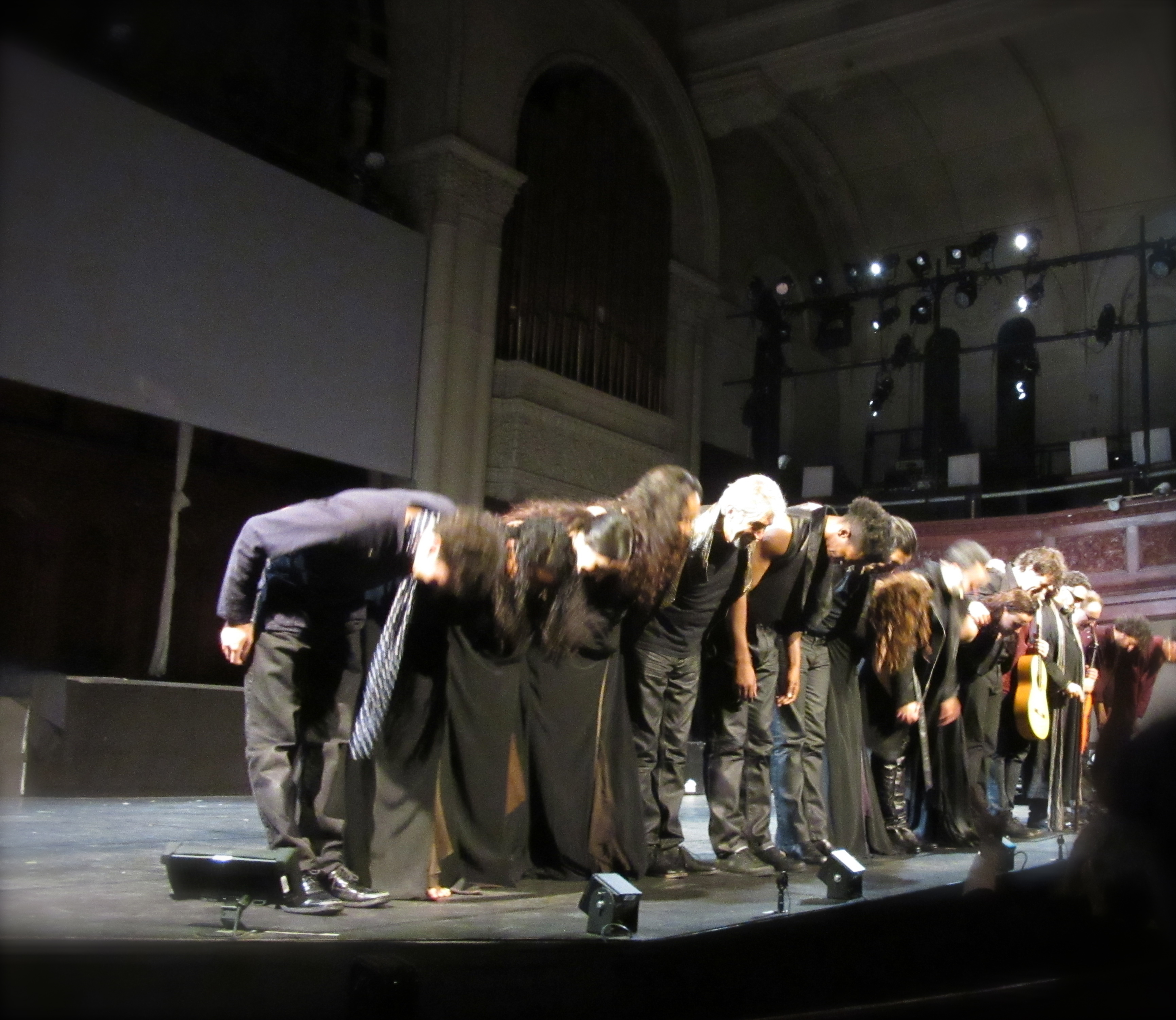Noche Flamenca’s ANTIGONA presents Sophocles’ tragedy using the conventions of flamenco dance, music and song. It connects the original theme, of a sister seeking to bury a disgraced brother against the dictates of the city state of Thebes, with recent efforts to exhume, identify and respectfully re-inter victims of the Franco regime in Spain. In the title role is Soledad Barrio, a dancer of inspirational intensity, and as her adversary Creon, the singer Manuel Gaga, who coats his words with an oily, almost pitiable villainy.
It is easy enough to sketch out the ways in which flamenco refracts Mediterranean tragedy and, in particular, the classical Greek. It is agonistic. The dancers at the climax of a traditional tablao play off and challenge each other, in style, technique, and embellishment. It is choral. The company eggs on the combatants with song, guitar, and palmas. And it engages a conflict greater than the personal, having to do with human beings in the universe and finding dignity in the way one holds oneself between earth and sky. The philosopher Unamuno’s “tragic sense of life” is inescapable here: a life lived tragically that makes death, through the nobility of its living, a moral affront.
Sophocles’ Antigone lives that life, which is to say in such a way that her death seems a great injustice. This is true even though the justice of the conflict in which she is engaged is by no means clear. Its very tragedy proceeds from its irreconcilability, between the law of the state that forbids the burial of a disloyal brother and the divine rule that a family’s dead be honored. There is a tendency, particularly when approaching the play with a modern sensibility, to side immediately with Antigone in her struggle with the uncle-king who demands obedience or death. She is the woman defying the patriarchy, the individual against the state, feeling opposed to abstract principle.
This is, to be sure, an inclination in the play itself, but the danger, in embracing it too readily, is of losing the ethical polarities of a tragedy that depends on the arguable legitimacy of both sides of the conflict. The point is not that a good person does right and a bad person kills her for it. It is that two positions, each in its way justifiable, are at odds and that death comes on faster than the realization required to know which, if either, of the parties is correct.
The moral choice in ANTIGONA, as adapted and directed by Martin Santangelo, is made from the beginning. The parallel to the historical tragedy of Franco’s Spain is a potent one, but it prejudges the debate at the heart of the drama. Creon’s fascist salutes and clownish torero arrogance (the language of the bullfight, and its considerable overlap with flamenco, is ingeniously deployed) forestall what credibility his arguments might otherwise have had. Creon isn’t a ruler struggling with the obligations of his charge, but simply a tyrant, and of the worst sort, a 20th-century fascist, at once monstrous and pathetic, petty and cruel.
There is, however, an apotheosis embedded in the form of flamenco that keeps ANTIGONA from the brink of melodrama and maintains it as tragedy. Flamenco builds, through successive rhythms and agonistic challenges, to a point at which the dancer breaks free, even of the music, dominating the stage and, at least symbolically, a larger sphere, social, aesthetic, and spiritual. For some (very good) dancers this is a moment of dramatic (and personal) triumph. When Soledad Barrio comes to it in ANTIGONA it is an act of existential protest and mortal resignation. Her heels have the strength of jackhammers and the precision of needlework; arms graceful as flames, and hands that flicker; torso still as a predator before the strike. Antigone will, minutes later, take her life in the cave she is walled into. But her spirit seems in Barrio’s dance to already have ascended.
Barrio is unique, but not alone. The musicians are excellent, and the cast is, in general, compelling, especially, I thought, Elisabet Torras as Antigone’s sister Ismene. The visual effects, beginning with the emergence of tragic masks from a draped black stage, give the experience a rich symbolic texture, including even the composition of the supertitles, which is both eloquent and poetic. The masks (credited as “based on the work of Mary Frank”) are remarkable, taking on facial expressions like the shadows of clouds crossing the land below. One of the most memorable moments is a haunting guitar solo to every note of which the player’s sad masked face seems, for all the world, to respond.
ANTIGONA is not perfected. I felt it was too busy at first, and a little cacophonous. The spoken parts of the chorus didn’t carry well in the wonderfully rundown West Park Presbyterian Church. At times it seems more of an alternation between flamenco and tragic drama than a comprehensive fusion. Yet it is one of those imperfect artworks that is a must-see despite, and even for, its flaws.
ANTIGONA returns in 2017 as part of Noche Flamenca’s 2016-’17 winter season. Click here for information.
